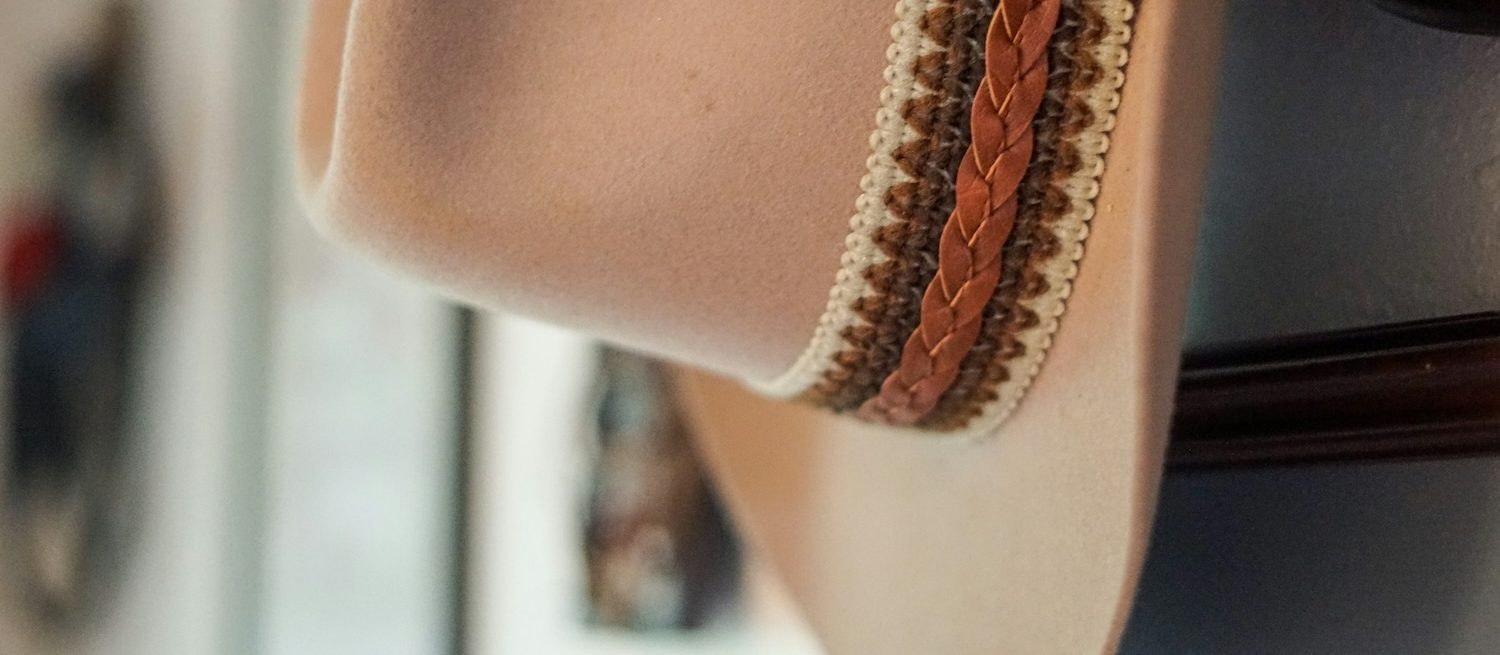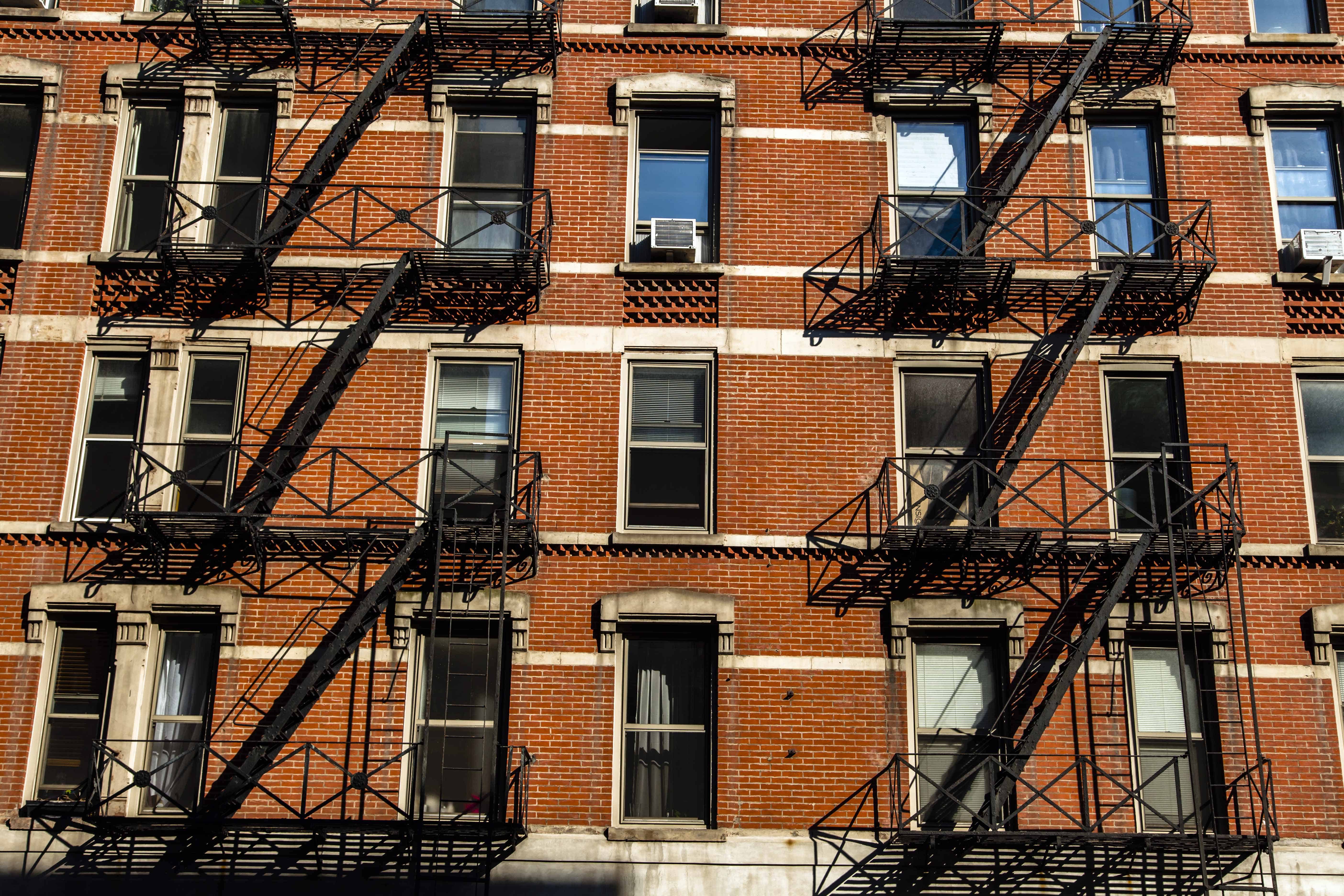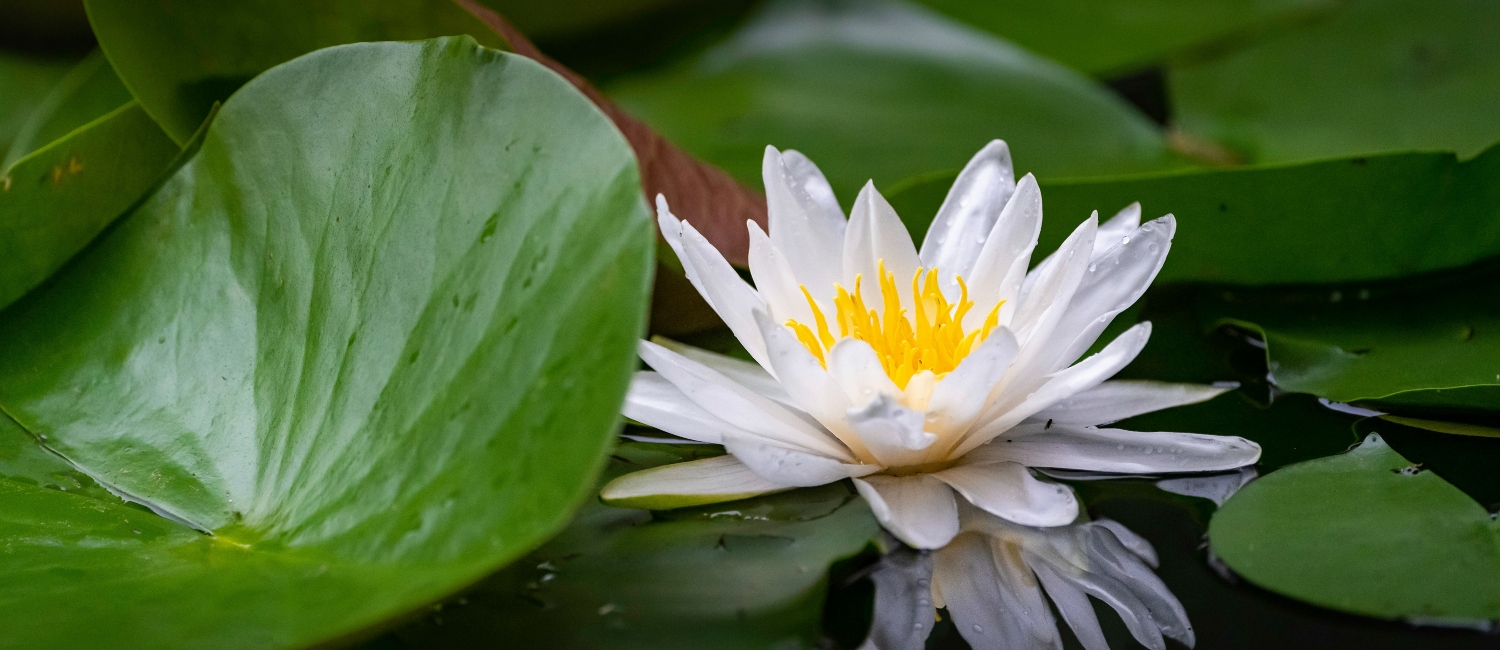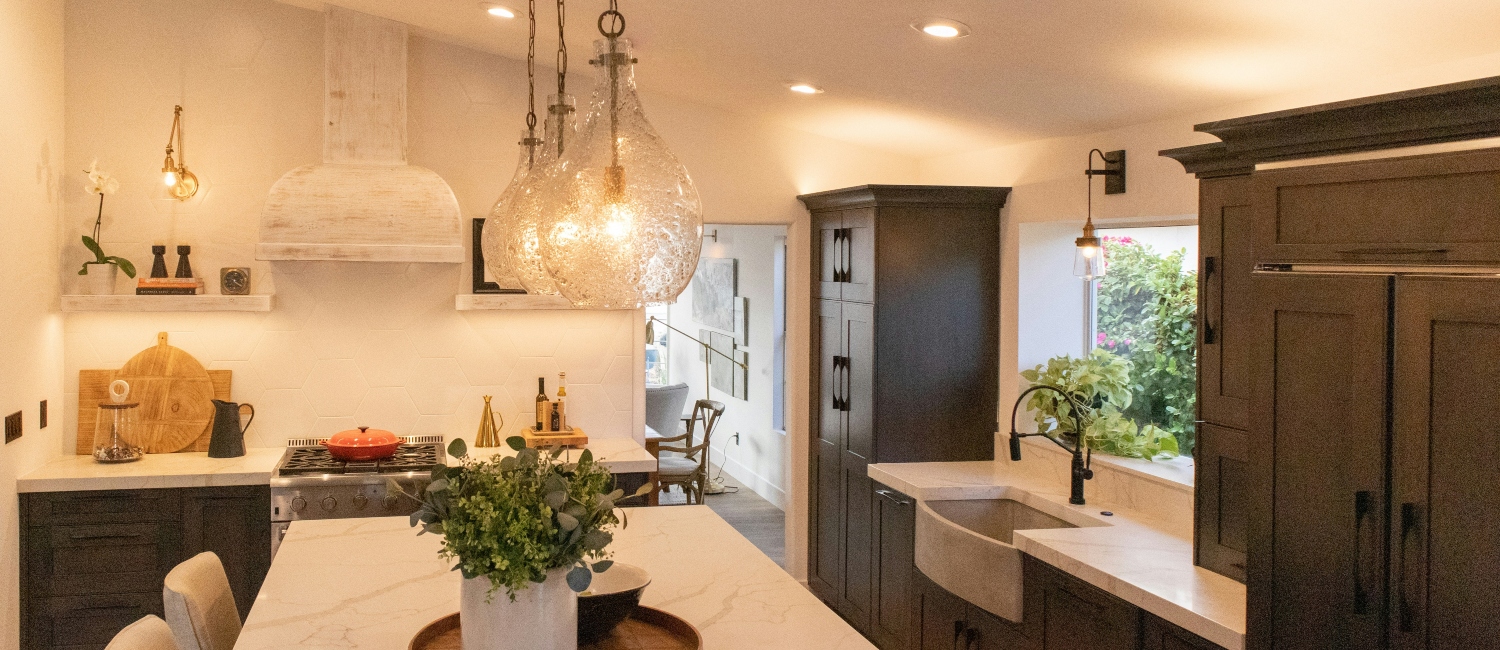Creating a balcony herb garden is a rewarding and practical way to add color and plant life to your outdoor space, as well as enjoy fresh herbs year-round. Whether you’re an experienced gardener or a complete beginner, starting a herb garden on your balcony doesn’t require a lot of space or expertise.
With the right herbs, containers, and tools, you can transform your balcony into a lush, productive oasis that’s both functional and beautiful. So whether you live in a home in Gatlinburg, TN, an apartment in Old Orchard Beach, ME, or a small rental home in Des Moines, IA, below are some helpful tips and strategies to get you started.

Best beginner herbs for your kitchen
Creating an herb garden can help liven up a bland balcony. However, it’s important to consider varieties that are easy to grow and that you’ll utilize when cooking. Creating an edible garden by growing herbs that you commonly use will ensure your experience is both practical and enjoyable. Anna Gall from Deanna Greens and Garden Art details some kitchen staples to consider:
“Herbs which are easy to grow are sage, rosemary, thyme, basil, and mint. Grow these herbs in pots on your patio during the warm months or windowsill in the winter. Use an organic, high-nutrient quality potting mix in pots that have a hole(s) for drainage.
Incorporating your fresh snipped herbs in your recipes will bring the most flavor bang to your culinary dish. The rule of thumb in cooking with fresh herbs, one tablespoon of fresh snipped herbs is equal to one teaspoon of the dried variety. Enjoy your next patio dinner with a loaf of your rosemary focaccia and iced pineapple sage tea!”
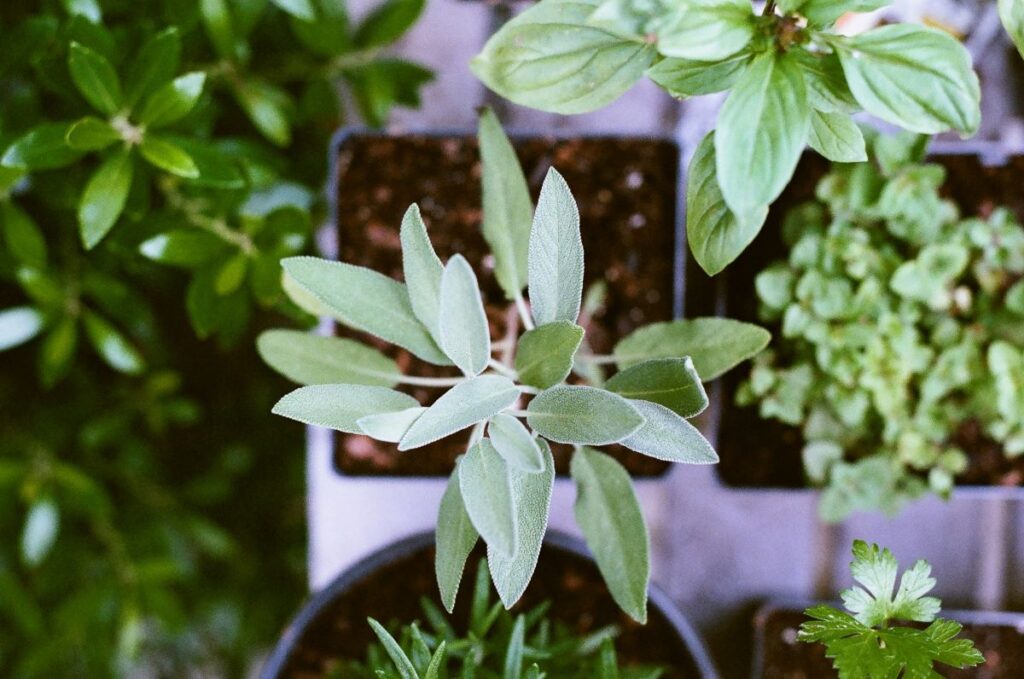
These herbs are not only easy to grow, but they are also incredibly useful in the kitchen, making them perfect for beginners. In addition to the beginner herbs mentioned above, take a look at the varieties below for your balcony herb garden:
- Oregano – A must-have for Mediterranean and Italian dishes, oregano thrives in sunny spots and is a great addition to pizzas, pasta, and sauces.
- Cilantro – Popular in Mexican and Indian cuisines, cilantro adds a fresh, bright flavor to salsas, curries, and salads. It requires full sun and well-drained soil.
- Lavender – While not strictly a cooking herb, lavender can be used in both sweet and savory dishes. It adds a unique flavor to desserts, teas, and even meats like lamb.
Selecting herbs that match your cooking preferences will make your apartment balcony garden not only functional but also a source of constant culinary inspiration.

Create an herb tea garden
Cooking herbs are a great way to spice up your home cooking, however, growing herbs with which to steep a relaxing tea is also a worthwhile endeavor. Paula Grainger from Paula Grainger Herbalist suggests the following:
“Create an herb tea garden by planting aromatic herbs like mint, lemon balm and lemon verbena. Regular trimming will give you refreshing herb teas for months on end and encourage the plants to keep producing more growth. These herbs are great for pollinators too so it’s a win-win for you and the environment.”
These herbs not only make soothing, aromatic teas but also brighten up your garden with their lovely blooms and scents. A tea garden is a great way to utilize the herbs you grow and a simple step toward sipping your way to wellness.
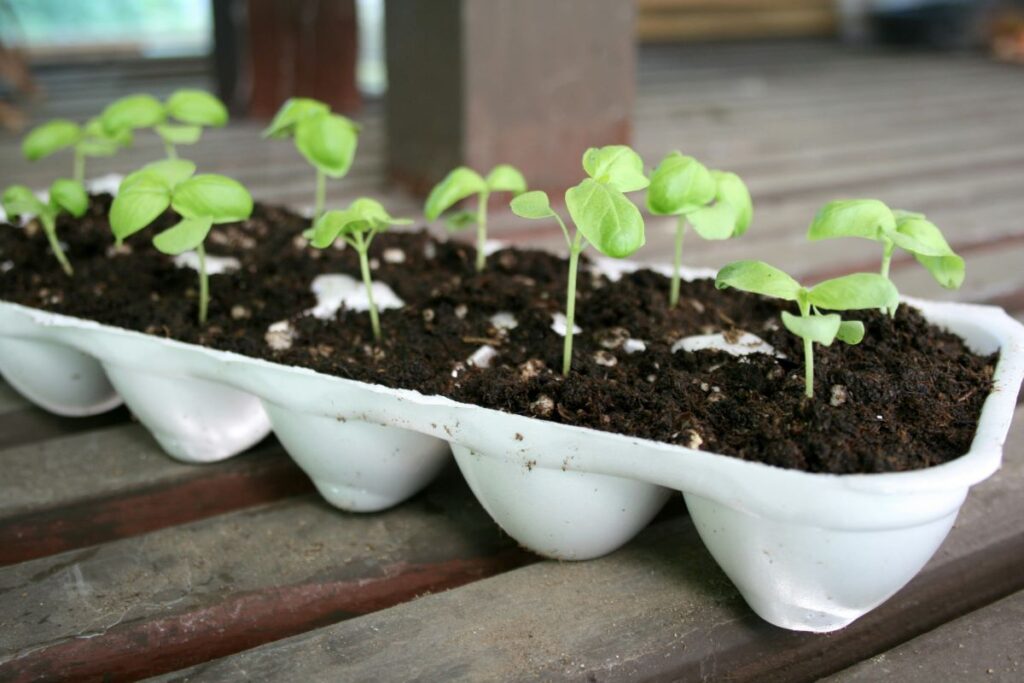
Unique heirloom herbs for your balcony herb garden
In addition to the beginner herbs mentioned above, consider planting heirloom varieties. Heirloom herb varieties have been passed down through generations, typically 50 years or older, and are usually open-pollinated, meaning they reproduce naturally without human intervention and maintain consistent traits.
Lisa Dermer from Southern Exposure Seed Exchange shares the following suggestions for planting heirloom seeds: “For unique herbs in container gardens, we recommend Mexican Mint Marigold, an anise-scented alternative to tarragon, and heirloom basil varieties like Mrihani, a complexly-flavored basil from Zanzibar, and Bolloso Napoletano, an Italian heirloom with huge rumpled leaves.
Green onions are easily grown on balconies: we recommend planting perennial Egyptian walking onions. The bulbs rapidly send out lovely tender onion greens and the “walking” bulbing tops and can be replanted. Garlic chives (which are flatter than chives and often used in Chinese cooking) will grow as a perennial in containers. Bring them indoors over the winter to prevent die-back during the colder months.”
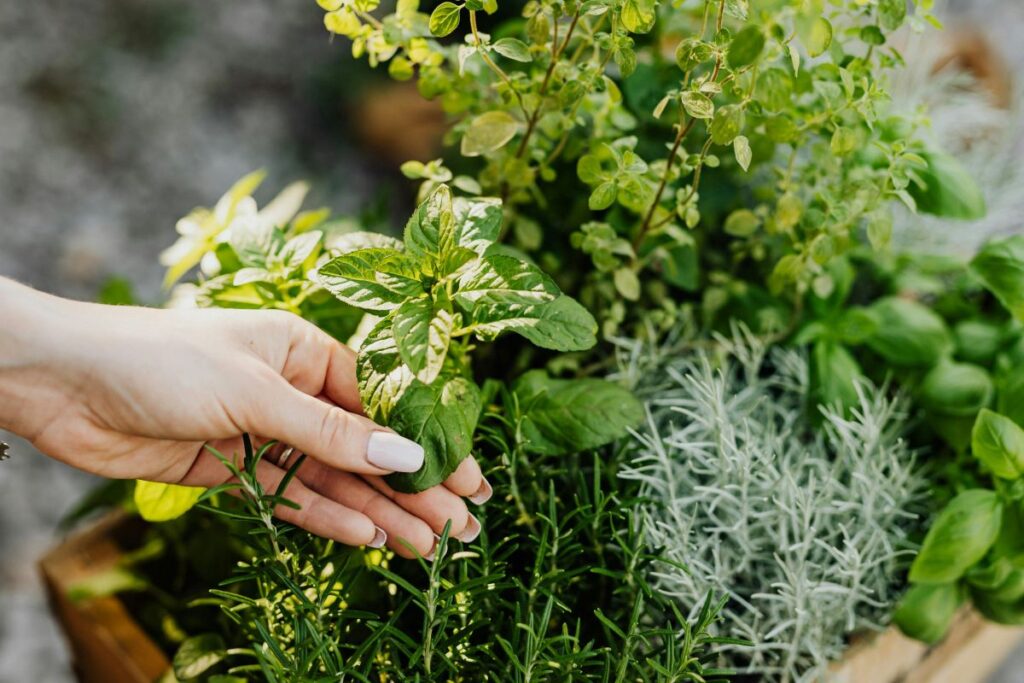
Sunlight and watering: essential for herb garden success
Sunlight and watering are crucial for healthy herb growth. Understanding your herbs’ light and water needs will help ensure a thriving balcony garden.
Sunlight: finding the right balance
A good place to start is observing how much sunlight your balcony receives. Sunny balconies are perfect for sun-loving herbs, while shaded areas work well for more tolerant varieties. Angelica from Peachy Apple Vegan elaborates, saying that, “Not all balconies get full sun, but that doesn’t mean you can’t have a flourishing herb garden. If your space is more shaded, opt for mint, parsley, and chives, which thrive with just a few hours of indirect light.
For sunnier spots, rosemary, thyme, and oregano love direct sunlight and drier conditions. To keep your plants growing strong, rotate your herb garden planters every couple of weeks to ensure even exposure to sunlight and airflow. This prevents weak/uneven growth, especially for basil, dill, and cilantro, which tend to stretch toward the light. A simple shift in position can make all the difference in getting a lush, healthy harvest!”
At Rent., we also recommend utilizing reflective surfaces by positioning pots near walls or windows that reflect sunlight for extra light exposure. In especially low-light conditions or winter months, you can supplement with grow lights to mimic natural sunlight.
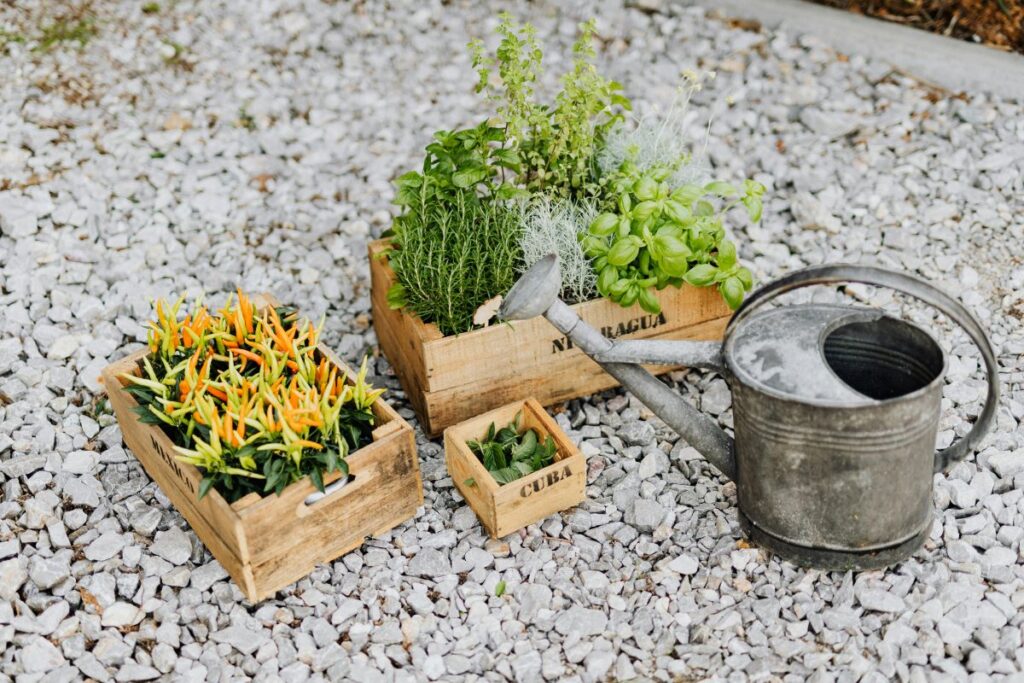
Watering: Getting the right amount
Proper watering is essential, but balance is key. “Don’t underestimate how much you have to water,” advises Wes Hooper, co-founder & urban farmer at Lifespace Gardens. “Most balconies get a lot of sun exposure (which can be great!) but can require watering twice a day in the summer. That’s why we build self-watering planters for all of our condo clients. It makes maintenance way easier, and reduces watering down to an easy weekly routine.”
It is also advisable to monitor your watering frequency. Check soil moisture regularly. Water when the top inch feels dry, especially in warm weather. During cooler months, reduce watering frequency, and always ensure containers have drainage holes to prevent waterlogging. With the right sunlight and watering practices, your herbs will thrive and provide fresh ingredients all year long.
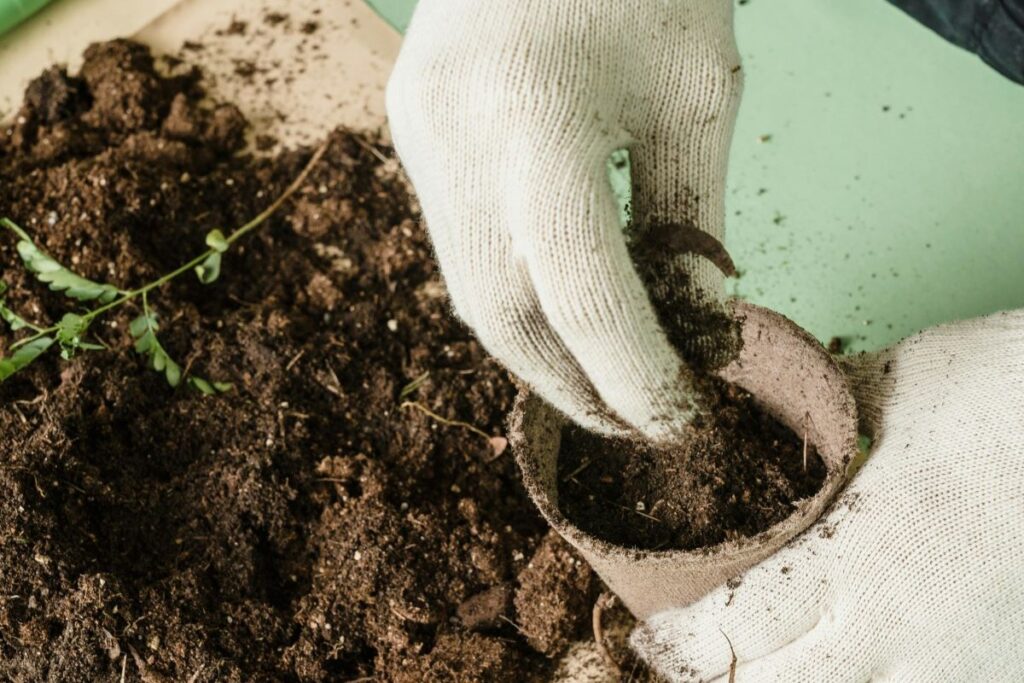
Choosing the right containers and soil
The foundation of any successful herb garden starts with the right containers and soil. Choosing the correct containers and soil is crucial for healthy growth, as herbs need adequate drainage, space and nutrients to grow their roots. Katie Stagliano, founder and chief executive gardener at Katie’s Krops recommends the following:
- Choose the right container size: “When growing an edible garden on your balcony, selecting the right container size is crucial. Plants need enough space to grow and thrive. For example, tomatoes do best in at least a 5-gallon container, while herbs and flowers can flourish in smaller pots. Giving your plants ample room will help ensure strong root development and a plentiful harvest!
- Use high-quality soil: When planting a container garden, your plants rely entirely on the soil you provide. It is vital to choose a nutrient-rich soil to give your vegetables the best start. Since roots are confined in container gardening, the plants need optimal nutrition to produce an abundant harvest. Investing in good soil will lead to happy and healthy plants!”
When selecting containers for your balcony herb garden, consider materials like terracotta, ceramic, and plastic pots . Ensure the size of the pot is appropriate for the herb you’re planting. Herbs like mint may require larger pots, while basil and thyme will do well in smaller containers. Saad Harraz from Harraz Farm & Garden notes that you should “Ensure your pots have drainage holes to prevent root rot.”
A high-quality, well-draining potting mix with added organic compost will keep your herbs nourished and healthy. Saad goes on to add that “Spring and early autumn are ideal for germinating most herbs. However, with the right indoor setup, you can start growing herbs year-round.” Consider using window boxes or hanging baskets if you’re working with limited space, as they can be mounted on railings or placed on shelves.
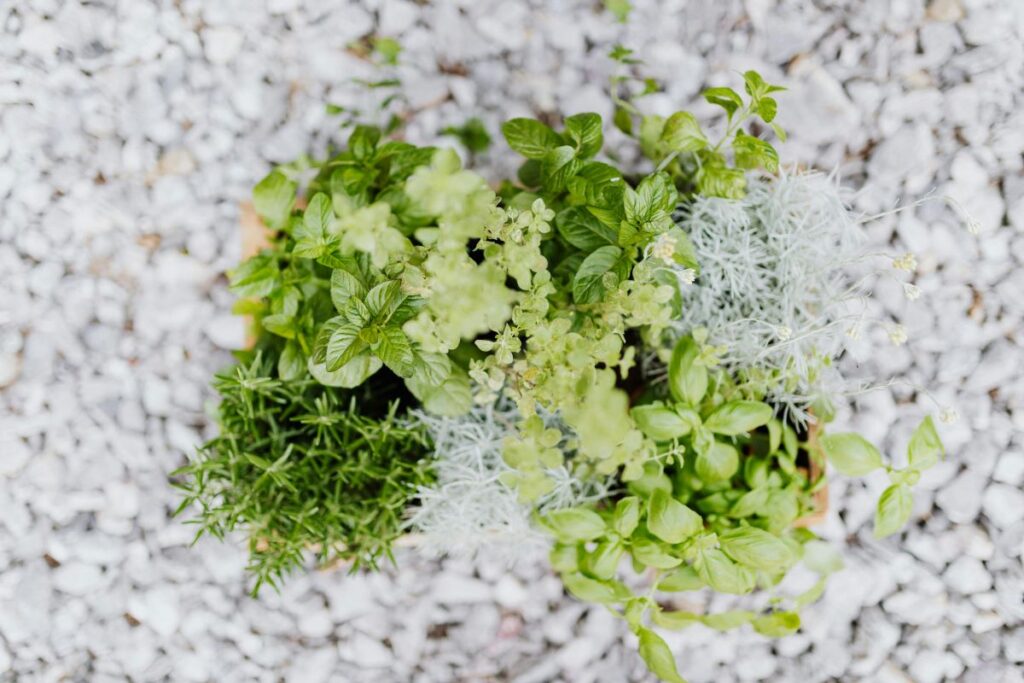
Maximizing space and sustainability
Maximizing the space on your balcony and making your herb garden sustainable are key to ensuring long-term success. Saad also chimed in here with a great design technique to maximize vertical space in your apartment balcony garden, advising that gardeners “Use wall planters, tiered shelves, or hanging baskets to make the most of small balconies. This not only saves space but also creates a lush, green aesthetic.”
Another great space-saving technique comes to us courtesy of Naomi Stephens, founder of Permaculture Apartment, who recommends companion planting. Naomi says that “Certain plants can benefit when planted together. For example, planting rosemary and oregano together works well because rosemary repels pests that can harm oregano. Planting a low-maintenance marigold like French marigolds alongside your herb garden is a good natural pest deterrent for most pests while providing aroma and beautiful color to your balcony.”
In addition to optimally utilizing space, it’s important to consider the longevity of your garden when brainstorming balcony herb garden ideas. Tazz Adams from Bonafide has some stellar advice for ensuring sustainability, noting that “Even in an urban setting, a balcony herb garden can thrive with the right approach. Choose herbs suited to your climate, use organic soil, and look into self-watering pots or recycled containers to help conserve water while keeping plants healthy. Proper drainage and at least six hours of sunlight daily are key to healthy growth.”
In addition to the above suggestions, rainwater harvesting is a great way to contribute to the sustainability of your balcony herb garden. Collect rainwater using a small barrel or container. This reduces your environmental impact and ensures your herbs receive natural, chemical-free water.
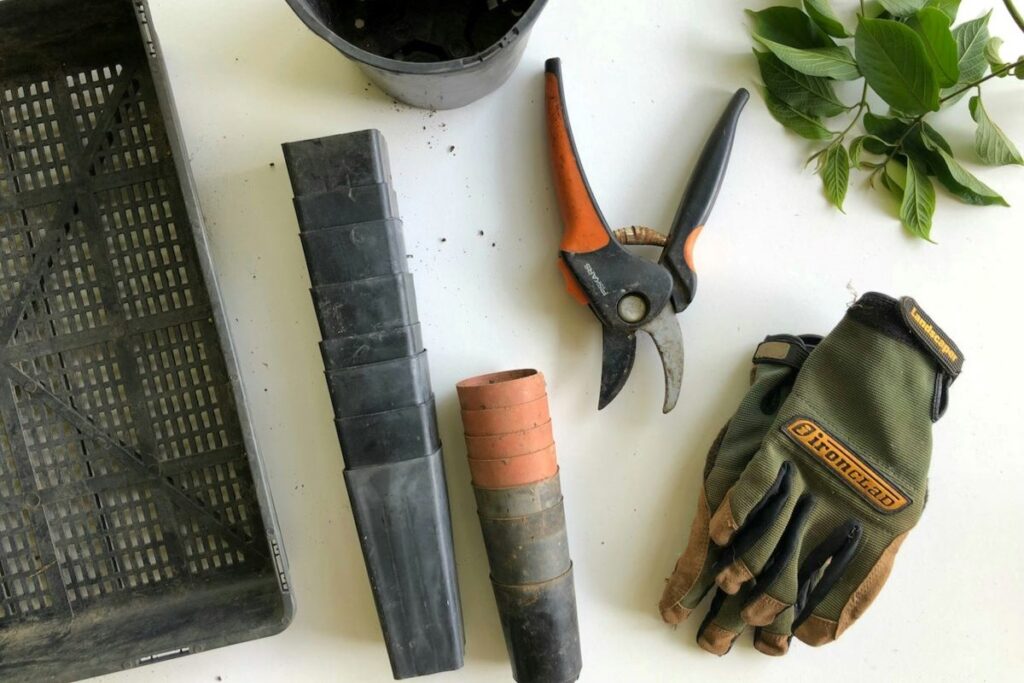
Helpful tools and accessories
When considering balcony herb garden ideas and garden maintenance, you’ll need a few essential tools and accessories. As mentioned above, the containers that you choose to plant in can drastically affect your gardening experience.
Dr. Joe Roselle, COO of Urban Farming Education recommends using “The Ready Go Garden Bag System, an innovative, climate-smart solution designed for small urban spaces. These breathable, portable grow bags create the perfect microenvironment for herbs.
They enhance root aeration and optimize water retention, which is essential for healthy plant growth in limited spaces. They are ideal for renters and urban dwellers, allowing for easy mobility and adaptability to varying balcony conditions. The Ready Go Garden Bag System aligns with UFE’s mission of closing the gap between information and action, empowering individuals to grow their own fresh food even in compact urban garden settings.”
After choosing your preferred container, the additional tools below will make gardening easier and more efficient:
- Hand trowel: A small, sturdy hand trowel is perfect for digging, planting, and moving soil.
- Pruning shears: Regularly trimming your herbs promotes new growth and keeps them looking neat. Invest in a good pair of pruning shears for precision.
- Watering can or hose: A small watering can with a fine spout is ideal for delicate herbs. Consider a hose with an adjustable nozzle to help water larger container gardens.
- Plant markers: Use plant markers to label your herbs. This will help you remember which herbs you’ve planted, especially as they begin to grow.
- Mulch: Adding a thin layer of mulch around your herbs helps retain moisture and reduces the need for frequent watering.
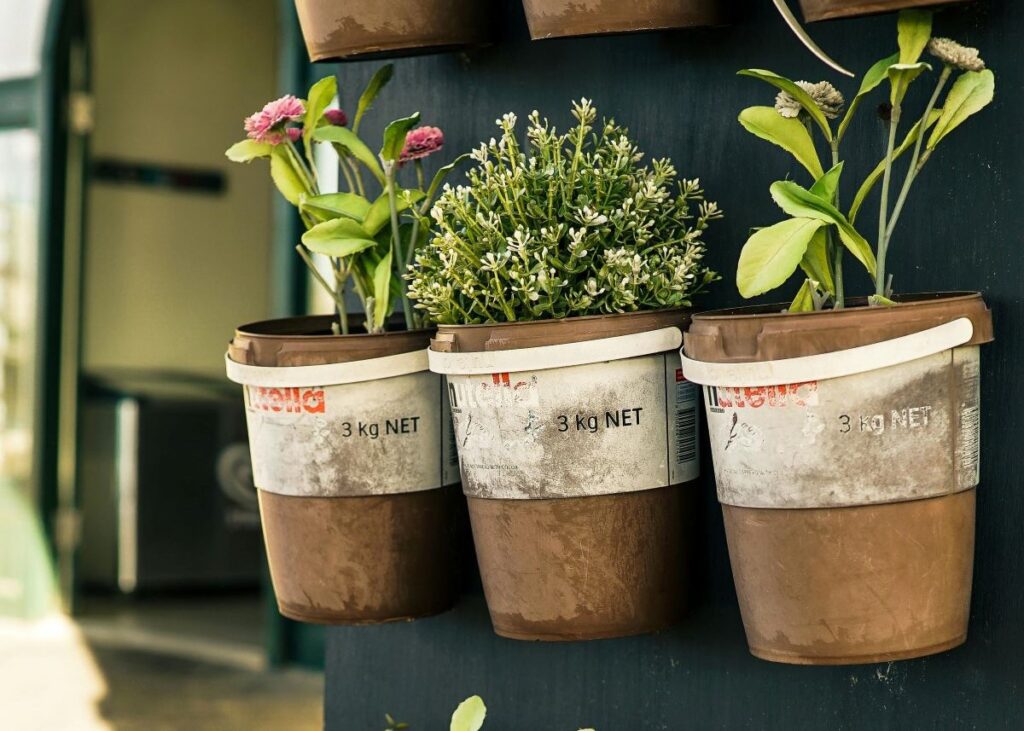
For a more specialized approach to maintaining your balcony herb garden, Nicole Dillon from BreeMar Flower Farm shares some stellar suggestions for upgrading your garden setup:
Vertical gardens: “There are some terrific vertical gardens (like the GreenStalk) that help make the most of a small space. Herbs and container-sized varietals of vegetables do well in a vertical configuration. With many pockets, it’s easy to succession plant. You can even throw some edible, flowering plants, like nasturtium, in there too for added beauty.
Intensive planting: An elevated raised bed (Consider self-watering for less maintenance and dripping messes) is a great option for a balcony. Utilize intensive planting methods and square-foot gardening techniques to make the most of the bed space. Usually, plants can be planted much closer than the seed packet indicates.”
Start your balcony herb garden today
Starting a balcony herb garden is an enjoyable and sustainable way to enhance your cooking while making the most of your outdoor space. By selecting easy-to-grow herbs, using the appropriate containers and soil, maximizing your space, and investing in the right tools, you’ll be well on your way to a thriving herb garden. With just a little effort, you can enjoy fresh, homegrown herbs at your fingertips, adding a personal touch to every dish you prepare. Happy gardening!




